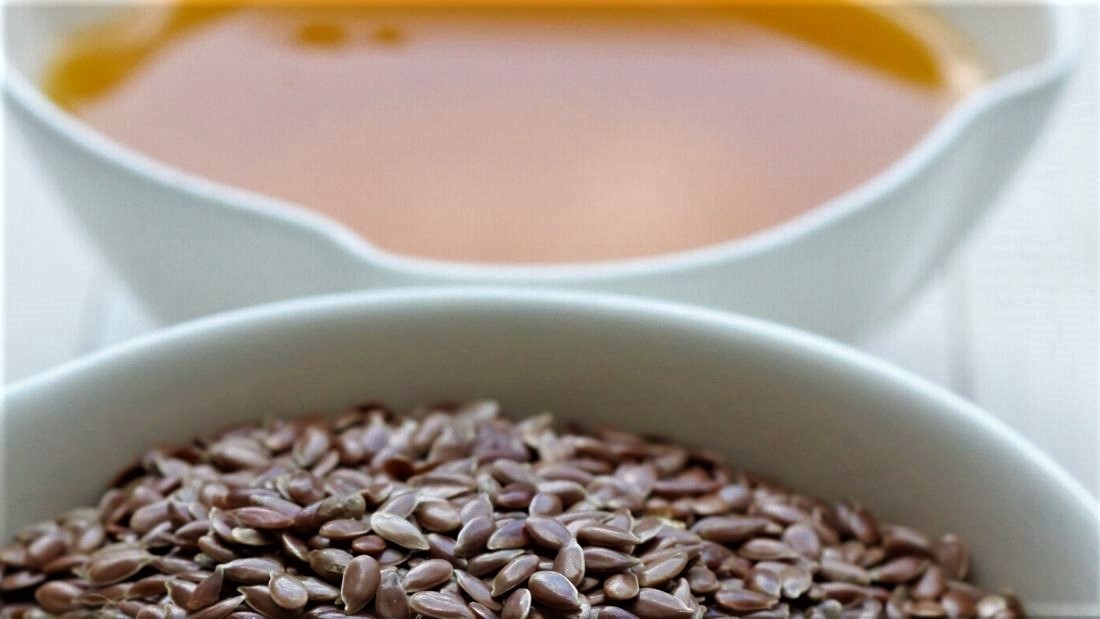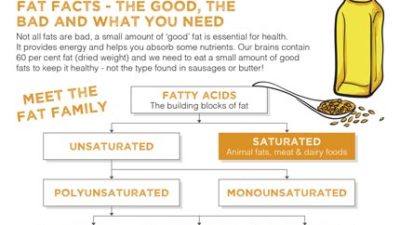Omega-3 fats – all you need to know

Most people know that saturated fats, like those found in meat, cheese, butter, pies and biscuits, are ‘bad’ and unsaturated fats, in nuts and seeds, are ‘good’. But are some of the good ones better than others and where can we find them?
Fatty acids are the building blocks of fats and the types described as ‘good’ fall into two groups – monounsaturated and polyunsaturated. Monounsaturated fatty acids include omega-7 and omega-9 fats, both found in macadamia nut oil and olive oil, for example. Our bodies can make these, so they are not considered ‘essential’ in the diet, but having a direct source of them can provide health benefits.
The two main classes of polyunsaturated fats are the omega-3 and omega-6 fatty acids. Alpha-linolenic acid (ALA) is an omega-3 fat found flaxseed oil, soya bean oil, rapeseed oil and nuts – especially walnuts. ALA is an essential fatty acid, which means our bodies can’t make it; so we do need to get it from our food.
EPA and DHA
The long-chain omega-3s, eicosapentaenoic acid (EPA) and docosahexaenoic acid (DHA), are found in oily fish such as sardines, salmon and mackerel. However, EPA and DHA can also be produced in the body from ALA. It sounds complicated but all we need to do is make sure our diets provide a moderate supply of healthy nuts, seeds and some plant oils!
Fishy facts
Fish don’t produce their own omega-3, they get it from the algae in their diet. So, if you want a belt and braces approach, you too can get your long-chain omega-3s EPA and DHA from vegan algae-based supplements which are available to buy online or in some health food shops. Algae used for omega-3 supplements are usually grown in controlled conditions away from the sea, so it doesn’t interfere with the marine ecosystem and doesn’t impact on fish stocks or their natural food source. This makes it is a more environmentally friendly choice than fish oil, and is also free from the pollutants, polychlorinated biphenyls, dioxins and mercury found in fish and fish products.
Studies show that diets rich in ALA offer a range of health benefits including lowering risk of heart disease, dementia, improving memory and may even help our eyesight. However, it’s unclear whether these benefits are derived directly from ALA, or from the long-chain fatty acids created in the body from ALA – EPA and DHA. The liver and neuronal cells of the brain convert ALA into these other omega-3 fats, which are required for healthy brain function among other things.
The rate at which ALA is converted into these longer-chain fatty acids is notoriously low, with estimates that no more than one per cent of ALA is converted and less than 0.1 per cent used to make DHA. The rest is used by tissues, such as the heart and other muscles, for energy, or it is recycled and used to make other fats such as cholesterol or amino acids (the building blocks of protein).
The enzymes our bodies use to convert ALA to EPA and DHA are the same ones used to convert the essential omega-6 fatty acid linoleic acid (LA) into its longer-chain omega-6s. This creates competition between the two essential fatty acids, so a high intake of one can impact the levels of the other. For this reason, it’s important to have a good balance of fats in the diet – most people need a little more omega-3 and a little less omega-6.
Brain development
The omega-3 fat DHA plays a vital role in the brain, with very high levels found in the membranes of brain cells. It is especially important in the early development of the brain in the embryo and foetus. The levels of DHA accumulate in the foetal brain during the last trimester and the first 6-10 months after birth; when the brain and vision are developing rapidly. During this time the infant is dependent on the fatty acids either in their infant formula or their mother’s breast milk – which varies depending on her diet. Reduced levels of DHA are seen in the brain cells of individuals with neurodegenerative diseases such as Alzheimer’s, which suggests there is still a lot that is not understood about the role of this fatty acid.
How much omega-3 do we need?
In the UK there is no specific recommended amount for omega-3s for the general population, we are mainly warned just to cut down on the ‘bad’ saturated fats found in meat, dairy and processed foods. The World Health Organisation says our omega-3 intake should make up 1-2 per cent of our total energy intake for the day. For most women, that means 2.0-4.4 grams of ALA a day and for men, 2.5-5.5 grams. The Scientific Advisory Committee on Nutrition in the UK recommends 500 milligrams of long-chain polyunsaturated fatty acids (EPA and DHA) per day. It’s hard to say how much ALA you need to reach this target as it depends on how well your body converts it.
Try to include at least one of the following each day:
| Food | One daily portion | Grams of ALA per portion |
| Flaxseed (linseed) oil | 2 tsp | 5.2 |
| Ground flaxseed | 2 tbsp | 3.2 |
| Rapeseed oil | 2 tbsp | 2.0 |
| Hempseed oil | 1 tbsp | 2.2 |
| Hempseed | 2 tbsp | 2.1 |
| Walnuts | 8 halves | 2.5 |
Heart health
Many studies suggest that omega-3 fats have multiple beneficial effects on heart health. Having plenty in your diet may reduce the risk of heart rate problems (arrhythmia), heart attacks, ischaemic heart disease and other cardiovascular diseases by altering the cell membrane of heart cells. There are also studies to suggest that diets high in omega-3 can reduce the risk of developing fatty plaques (atherosclerosis) on the inside of blood vessels, which increases the risk of heart attack, stroke, blood clots and high blood pressure. Whilst these results are promising, more research is needed to be sure of the effect of omega-3 on the cardiovascular system.
Anti-inflammatory effects
Many diseases have an inflammatory aspect including rheumatoid arthritis, asthma, irritable bowel syndrome, Crohn’s disease, ulcerative colitis, atherosclerosis, obesity and autoimmune disease. Chemical messengers in the body called cytokines tell the body that it needs to mount an inflammatory response. This is usually in response to bacteria, viruses or injury, but sometimes there is no obvious cause – such as in the case of many autoimmune diseases. Studies have shown that EPA and DHA are able to block these chemical messengers, and may be beneficial in reducing the inflammation of various diseases.
Final word
Omega-3 is essential in the diet, whether you choose to just have a good source of ALA or add direct sources of EPA and DHA from algae supplements too. Having a diet high in omega-3s may help protect against cardiovascular disease, inflammatory diseases, and even neurodegenerative diseases like Alzheimer’s.
To find out more about fats see here.
Coauthor: Grace Forsythe






